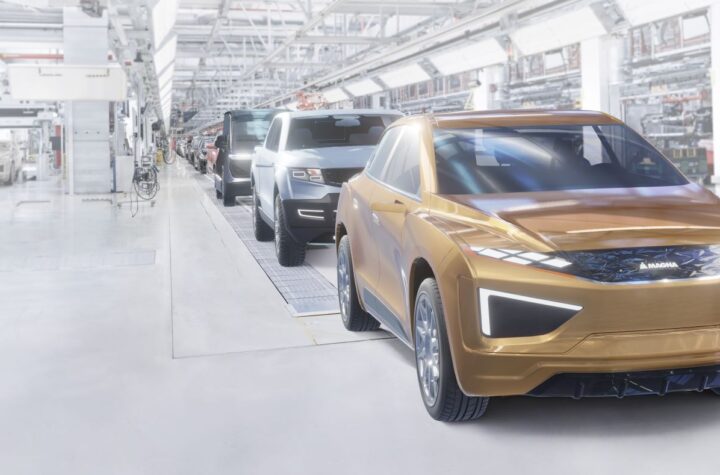
Emerging Market
China’s light passenger vehicle market has grown about 30 percent per year on average since 1991 and over 40 percent per year in the last two years. The number of passenger cars sold in China in 1991 was under 500,000, while passenger cars sold in China in 2003 broached 2.5 million. Ten years ago, less than one percent of passenger vehicles were privately owned. The passenger car market was dominated by government-owned vehicles. Today, private ownership hovers close to 55 percent, and is moving toward 70 percent in the next five to seven years.
 |
| General Motors workers inspect a batch of Buick Sail sedans at the company’s Jinbei, China, plant. |
Partnerships and joint ventures are being created to maintain business relationships in a fast-growing Chinese automotive market. The fact is, as more and more components are made locally, many Chinese companies have grown in scale and capability and are able to accommodate increased demands for locally made products. Tier 2/3 suppliers who aren’t proactive in China are in danger of losing business to Chinese companies.
Currently, all the world’s major automakers have entered the Chinese market and competition has intensified. In 2002, there were 11 new car models plus 24 facelifts. In 2003, the Chinese marketplace witnessed 40 new models.
Ford, who began talks with China in the late 1970s, launched its first “made-in-China” car, the Fiesta, in 2003 and also began the production of its Mondeo luxury car in China.
The same year, General Motors opened its fourth plant in China, a $108 million facility to double production of Buick sedans and compact cars. Hyundai announced a new joint venture with Beijing Auto Industry Corporation (BAIC) to produce the Sonata sedan in 2003. Hyundai and partner company Kia are targeting to build and sell more than 800,000 cars per year in China by 2010. VW, which has led the market in China, saw sales grow more than 40 percent in 2003. But VW acknowledged that its market share had been cut to one-third amid competition. GM was No. 2, with 386,710 sales in 2003. For Ford, 2003 marked its first year ever to top 200,000 Chinese sales.
Most luxury sedans in China are imported, except for limited numbers of Red Flag limousines made for state leaders before China opened its door to the outside world and recent new foreign brands such as BMW. Sedans with a unit price over $36 — 42,000 are considered luxury cars. The most popular models include Mercedes, BMW, Jaguar and Lexus.
Some reports indicate that the rich account for 10 percent of China’s population. With an estimated 1.3 billion people, luxury carmakers anticipate continued growth in the Chinese marketplace. This summer, Mercedes-Benz’s China division announced expectations to sell 1,000 Maybachs annually in China. Toyota has unveiled plans for six Lexus dealerships in Beijing, Shanghai, Shenzhen and Guangzhow, increasing the number to 14 by mid year 2005. BMW sold more than 18,000 cars in mainland China in 2003, becoming the company’s eighth-largest market. As much as changed in the last 10 years in China, more is expected in the next 10 years as OEMs and suppliers continue to align themselves to optimize the growth potential of an evolving marketplace.
The explosive growth in China within recent years has made it the world’s third largest national automotive market, knocking out Germany to fall behind the U.S. and Japan. While China car sales slowed some this year to an annual growth rate of 12 percent, 2003 saw a growth rate of 36 percent. Some auto analysts predict that China will take over the number two spot from Japan by 2010 and surpass the U.S. for the largest automotive market by 2025.
Contributions made by Technomic Asia, a Shanghaibased market strategy firm. Technomic Asia has assisted over 160 multinational firms with their China growth strategies across a wide array of industries since 1991. For further information, please contact Steven H. Ganster, Managing Director, Technomic Asia at (86) 21 6473-2588 in Shanghai or sganster@technomicasia.com. You can also visit their website at www.technomicasia.com













More Stories
From Gasoline Powered Cars To Electric Vehicles | Electric Moped Bike A Best Alternative
Rubbernecking: A Silly Reason for Car Accidents
Flexible Magna Manufacturing Solutions: The Key to Success in the Automotive Industry